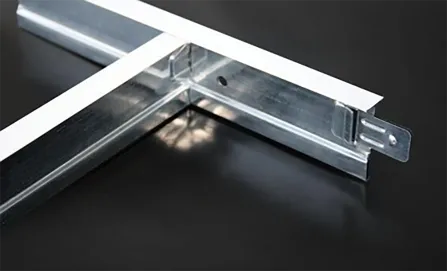- Afrikaans
- Albanian
- Amharic
- Arabic
- Armenian
- Azerbaijani
- Basque
- Belarusian
- Bengali
- Bosnian
- Bulgarian
- Catalan
- Cebuano
- Corsican
- Croatian
- Czech
- Danish
- Dutch
- English
- Esperanto
- Estonian
- French
- German
- Greek
- Hindi
- Indonesian
- irish
- Italian
- Japanese
- Korean
- Lao
- Malay
- Myanmar
- Norwegian
- Norwegian
- Polish
- Portuguese
- Romanian
- Russian
- Serbian
- Spanish
- Swedish
- Thai
- Turkish
- Ukrainian
- Uzbek
- Vietnamese
Th12 . 03, 2024 22:58 Back to list
Ceiling Access Panels Installation and Maintenance Guide for Efficient Space Management
Access Panels in Ceilings Purpose, Benefits, and Installation
Access panels in ceilings are crucial components in modern construction and renovation projects, providing a practical solution for accessing the spaces above ceilings. These panels allow quick entry to systems such as plumbing, electrical wiring, HVAC, and other utilities, which might require maintenance or inspection. In this article, we'll explore the purpose of access panels, their benefits, and considerations for installation.
Purpose of Access Panels
Access panels serve a functional role in building design. They provide convenient access to crucial mechanical and electrical systems without the need for extensive demolition or disruption of interior spaces. By facilitating quick entry, access panels ensure that maintenance tasks can be executed efficiently, which is essential for the longevity and reliability of the systems they cover.
In many commercial and residential buildings, the ceiling space is utilized for more than just aesthetics; it's often referred to as the plenum space. This area houses various systems, including ductwork for heating and cooling, wiring for electrical systems, and plumbing for overhead fixtures. Access panels allow technicians to reach these systems without needing to cut holes in the drywall or ceilings, which can create additional work and mess.
Benefits of Access Panels
1. Easy Maintenance One of the most significant benefits of having access panels installed is the ease of maintenance. When technical issues arise, maintenance crews can quickly inspect and repair systems, minimizing downtime and inconvenience.
2. Cost-Effectiveness Access panels can save money in the long run. Although there is an initial installation cost, the reduction in labor and time required for repairs can offset this expense. Additionally, regular maintenance facilitated by easy access can prolong the lifespan of systems and reduce the likelihood of major repairs.
3. Aesthetic Flexibility Modern access panels are designed to blend seamlessly with ceilings, ensuring that aesthetics are not compromised. They can be painted over or finished to match the surrounding surface, making them virtually invisible.
4. Code Compliance In many jurisdictions, building codes require access panels for specific systems. Installing them can ensure that a building complies with local regulations, thus avoiding potential issues during inspections.
access panel in ceiling

5. Enhanced Safety Quick access to mechanical systems can enhance safety in both residential and commercial spaces. Regular inspections and maintenance can prevent hazardous situations such as electrical failures or water leaks.
Installation Considerations
When planning for access panel installation, several factors should be considered
1. Location Identify which systems require access and choose locations that are convenient for maintenance personnel. Avoid placing access panels in areas that might impede everyday activities.
2. Size The size of the access panel should be adequate to provide sufficient space for maintenance tasks. It is essential to strike a balance between minimizing visible disruption and ensuring functionality.
3. Type of Panel There are various types of access panels available, including insulated panels, fire-rated panels, and those designed for specific applications such as plumbing or electrical systems. Selecting the appropriate type based on the location and function is crucial.
4. Installation Process While some access panels can be installed easily, others may require professional installation, especially in commercial settings where compliance with regulations is necessary.
5. Material Access panels can be made from different materials, including steel, plastic, and aluminum. The choice of material may depend on the specific application, durability needed, and aesthetic requirements.
Conclusion
Access panels in ceilings are indispensable for modern buildings, providing both practical and aesthetic benefits. Their installation promotes efficiency in maintenance and can save costs in the long run. By ensuring that these access points are thoughtfully integrated into building designs, property owners can enhance functionality while maintaining the overall appeal of their spaces. As such, access panels should be a key consideration in any construction or renovation project.
-
Transform Interiors with PVC Gypsum Ceiling: A Stylish, Durable, and Moisture-Resistant SolutionNewsMay.19,2025
-
The Smart Interior Upgrade: Discover the Durability and Versatility of Gypsum Ceiling Access Panel SolutionsNewsMay.19,2025
-
The Smart Choice for Interior Design: Discover the Value of PVC Gypsum Ceiling SolutionsNewsMay.19,2025
-
Mineral Fiber Ceiling Tiles: The Smart Blend of Performance and AestheticsNewsMay.19,2025
-
Mineral Fiber Ceiling Tiles: The Superior Choice Over Gypsum for Sound and Fire SafetyNewsMay.19,2025
-
Mineral Fiber Ceiling Tiles: Eco-Friendly Strength and Style for Every CeilingNewsMay.19,2025







